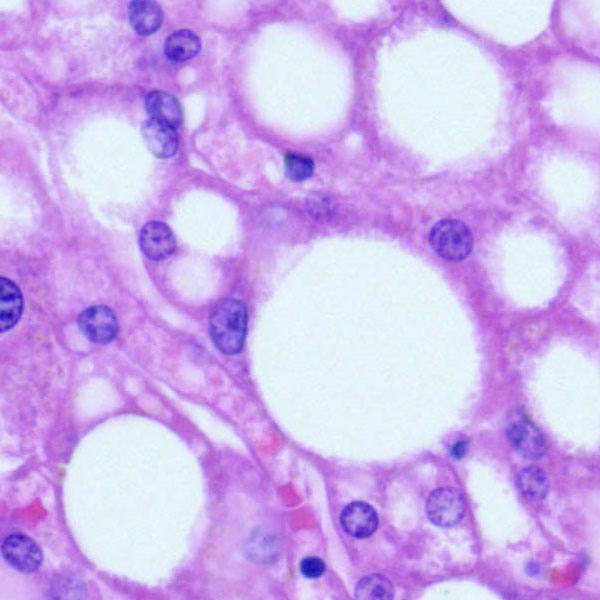-
Bad Fat, Misbehaving Kidneys May Share Common Offender
In a recent paper published in Cell Reports, Mayo Clinic scientists found that a sensory device on cells determines if a fat cell burns fat or stores it. Understanding the difference may lead to therapies for metabolic disorders, obesity and potentially kidney disease.
"We started this work by studying polycystic kidney disease," says Jinghua Hu, Ph.D., a Mayo Clinic scientist and senior author of the paper. The work is a collaboration between Dr. Hu's lab, which focuses on the sensory antenna of the cell in different human diseases, and the labs of Eduardo Chini, M.D., Ph.D., focused on metabolism regulation; James Kirkland, M.D., Ph.D., focused on adipogenesis and senescence; and Kun Ling, Ph.D.; focused on cancer and signaling transduction.
"After we generated the model to examine our protein of interest, we were caught by the unexpected development of healthy obesity in the mice," says Dr. Hu.
"Healthy" obesity refers to fat accumulation without metabolic dysfunction, insulin resistance, inappropriate fat storage or lipotoxicity. The mice in the model were missing the ability to make FBF1, a protein that operates as the "gate" between a cell and its antennalike structure called primary cilium. This sensory device protrudes from the surface of a group of progenitor cells that will mature into different types of fat cells, or adipocytes, when reacting to their environment. The primary cilium helps a progenitor cell decide on what kind of fat cell type it will become:
White fat cells are the most common in the body, and they store lipids, forming white adipose tissue. If they store too much, these cells can become so big that normal functions are disrupted. Rogue white fat cells are a major risk for obesity- and aging-associated health complications, such as Type 2 diabetes and cancer. Another type of fat is brown adipose tissue. These fat cells break down sugar and fat molecules to create heat, but most adults have little of this kind of fat. A third type of fat cell acts like a hybrid between white and brown fat cells, and, perhaps unsurprisingly, these are called beige fat cells. They can store fat as an energy reserve, but they are also capable of burning extra lipids to prevent the cell from getting too big and becoming dysfunctional. Beige fat cells are found inside white adipose tissue.

"We discovered that the primary cilium determines the fate of fat progenitor cells. By manipulating the function of this tiny device, we could direct the fate of progenitor cells," says Dr. Hu. "We could have an obese mouse not develop into diabetes because we could make white fat tissue contain more beige fat cells and be much healthier."
In general, researchers have found that directing white fat cells to become more beige helps avoid metabolic disruption, and previous research shows that white adipose tissue will gain more beige fat cells after cold exposure or exercise, for example. But the mice in this study simply gained beige fat cells from birth.
Dr. Hu and colleagues found that FBF1 — which acts as a gate to control signal communication between the cilium and the cell — mutes signals that lead to "beiging" of the fat cells. They also found that it blocks off signals to guide progenitor cells to produce more fat cells. By removing FBF1, the signals get through to the cell, and more beige fat cells are produced in white fat tissue. That leads to metabolically healthier fat tissue. With this knowledge of "beiging," the authors hope to expand therapeutic options for conditions related to obesity.
"Understanding the molecular mechanism underlying healthy obesity may reveal therapeutic targets in metabolic disorders and age-related diseases," says Dr. Hu. "At a molecular level, 'bad' fat tissue and misbehaving kidneys may share the same cause, and that's the beauty and fun of discovery science."
In addition to Dr. Hu, authors from Mayo Clinic are Yingyi Zhang, Ph.D.; Jielu Hao, M.D.; Gina Warner; Nino Giorgadze; Yan Huang; Kai He, Ph.D.; Chuan Chen, Ph.D.; Thais Ribeiro Peclat Monteiro, M.D., Ph.D.; Thomas White, Ph.D.; Kun Ling, Ph.D.; Tamar Tchkonia, Ph.D.; James Kirkland, M.D., Ph.D., the Noaber Foundation Professor of Aging; and Eduardo Chini, M.D., Ph.D.
See the full paper for funding information, including support from Mayo Clinic's Center for Biomedical Discovery, and benefactor funding from the Connor Fund, Robert J. and Theresa W. Ryan, and the Noaber Foundation.
- Read "Good Advice on Obesity? Wait for It" to learn more about Dr. Hu and other obesity researchers at Mayo.
- For more on surprise discoveries, read "Model for Rare Cancer Results Instead in Obesity."
Related Articles







